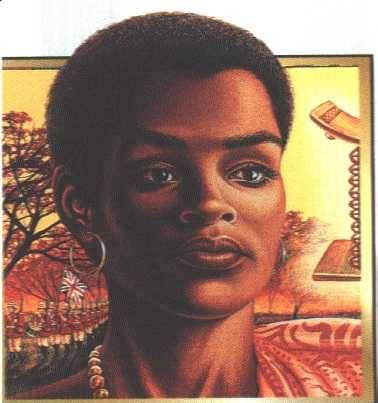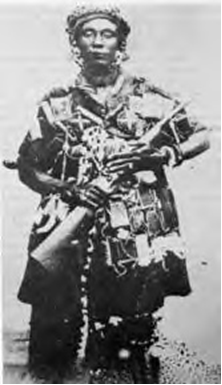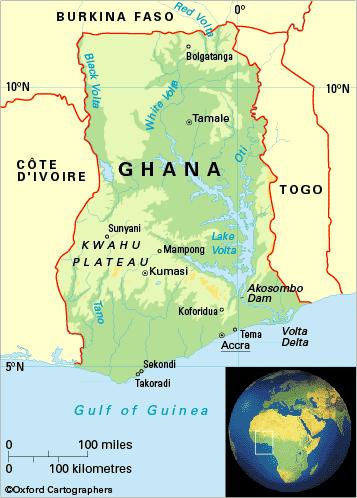
Yaa Asantewaa (1840-1921)
Pronounced YAH ah-SAN-te-wah was appointed Queen mother of the Ejisu (now part of modern day Ghana, by her brother Nan Akwasi Afrane Okpese, the Ejuisuhene (ruler of Ejisu).
In 1900 she led the Ashanti rebellion known as the War of the Golden Stool against British Colonialism.
During her brother's reign, Yaa Asantewaa saw the Asante Confederacy go through a series of events that threatened its furture, including the civil wars from 1883-1888. When her brother died in 1894, Yaa Asantewaa used her right as Queen mother to nominate her own grandson asa Ejisuhene. When the British exiled him in the Seychelles in 1896, along with the King of Asante Prempeh I and other members of the Asante government, Yaa Asantewaa became regent of the Ejisu-Juaben District. After the deportation of Prempeh I the British governer-general of the Gold Coast, Frederick Hodgson, demanded the Golden Stool, the symbol of the Asante nation. There was a disagreement among those present on how to go about this. Yaa Asantewaa, who was present at the meeting, stood and addressed the members of the council with these famous words.
"Now I see that some of you fear to go forward to fight for our king. If it were in the brave days of Osei Tutu, Okomfo Anokye, and Opoku Ware, chiefs would not sit down to see their King to be taken away without firing a shot. No European could have dared speak to chiefs of Asante in this way the governor spoke to you this morning. It is true that the bravery of Asante is no more? I cannot believe it. It cannot be! I must say this: If you, the men of Asante, will not go forward, then we will. We , the women , will. I shall call upon my fellow women. We will fight the white men. We will fight till the last of us falls in the battle fields.
With this, she took on the leadership of the Ashanti Uprising of 1900, gaining the support of some of the other Asante nobility. Yaa Asantewaa is still a very much-loved figure in Ghana.

The Rebellion and its Aftermath
Beginning in March 1990, the rebellion laid seige to the fort at Kumasi where the British had sought refuge. The fort still stands today as the Kumasi Fort and Military Museum.
The Gold Coast governer eventually sent a force of 1,400 to quell the rebellion. During the course of this, Queen Yaa Asantewaa and 15 of her closest advisers were captured, and they were sent into exile to the Seychelles. The rebellion represented the final war in the Anglo-Asante series of wars that lasted throughout the 19th century. On January 1, 1902 the British were finally able to accomplish what the Asante army had denied them for almost a century, and the Asante empire was made a protectorate of the British crown. Yaa Asantewaa died in exile on October 17, 1921. Five years after her death, on November 12, 1926, Prempeh I and the other remaining members of the exiled Asantes were returned for a proper Royal burial. Yaa Asantewaa's dream for an Asante free of British rule was realised on March 6, 1957, when the Asante protectorate gained independence as part of Ghana, the first African nation to achieve this feat.

Yaa Asantewaa remains a much-loved figure in Asante history and the history of Ghana as a whole for the courage she showed in confronting injustice during the colonialism of the British. To highlight the improtance of encouraging more female leaders in Ghanaian society, the Yaa Asantewaa Girl's Secondary school was established at Kumasi in 1960 with funds from the Ghana Educational Trust.
In 2000, week long centenary celebrations were held in Ghana to acknowledge Yaa Asantewaa's accomplishments. As part of these celebrations, a museum was dedicated to her at Kwaso in the Ejisu-Juaben District on August 3, 2000. Unfortunately, a fire there on July 23 2004, destroyed several historical items including her sandels and battle dress. The current Queen Mother of Ejisu is Yaa Asantewaa II.